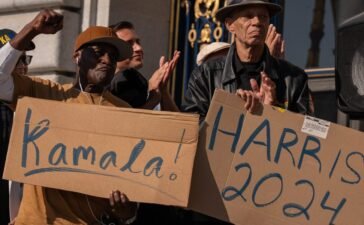Stock market outlook: A top Wall Street strategist sees stocks dropping 10% due to a ‘moderate form of stagflation’


After a stellar 2023, the stock market has continued to brush off the impact of stubborn inflation and higher interest rates this year. The S&P 500 is up more than 12% year-to-date to a record high, topping the roughly 10% average annual rise in the blue chip index since 1957 in under six months. A strong first quarter earnings season and resilient economy have underpinned stocks’ success, but some of Wall Street’s top strategists still fear a downturn is on the way.
In a Tuesday note, Stifel’s chief equity strategist Barry Bannister said he expects the S&P 500 to sink roughly 10% to 4,750 by the end of the summer. The Wall Street veteran—who argued in 2023 that the stock market returns could be flat for a decade, when adjusted for inflation—cited three main reasons for his bearish outlook.
The first, perhaps unsurprisingly, was “sticky” inflation. Bannister has warned for months now that he believes the Federal Reserve already “harvested” all the disinflation that typically comes with a recession during a 5-quarter-long “pseudo-recession” that ended in the second quarter of 2023. In May, he even argued that this means Fed officials’ goal to return inflation to 2% is nothing but a “pipe dream.”
Bannister fears strong services spending along with rising healthcare, financial and insurance costs will lead to persistent inflation in that key sector of the economy. Tack on more housing inflation than previously forecast, a slowing productivity growth rate, and persistent wage growth and you have a recipe for a “moderate form of stagflation,” he says.
This low-growth, moderate-inflation outlook could cut the S&P 500’s price-to-earnings ratio—a metric used to value the index—by 500 points, the strategist warned, as investors account for lower potential revenue growth and higher costs.
After stocks’ surge this year, the S&P 500 trades at just over 23 times earnings, according to the Wall Street Journal. That’s rich, compared to the historical average of 19.4 times earnings.
Bannister isn’t the only one sounding the alarm after the stock market’s recent rise. Wells Fargo’s strategy guru Scott Wren told investors to “buckle up for more volatility” in his Wednesday note. “There are a number of potential issues that could spark financial-market volatility in the months ahead,” the senior global market strategist wrote.
Wren, like Bannister, cited the timing of the Fed’s interest rate cuts as a potential trigger for a market pullback. After projecting three interest rate cuts this year back in March, the Fed’s economists are likely to pencil in only one or two cuts at the June Federal Open Market Committee (FOMC) meeting, according to Wren. That could spark issues for stocks, as many investors are still expecting multiple (typically) market-juicing rate cuts this year.
“Will the old market bromide ‘sell in May and go away’ work this year? That remains to be seen, but we are not expecting the [S&P 500] to gain meaningful upside here through year-end,” Wren wrote.
The Wells Fargo strategist also warned that high food and energy prices will continue to weigh on consumer sentiment, and the U.S. election is likely to bring volatility to markets. He recommended investors look to larger, so-called “quality” companies—those with strong balance sheets, low debt, and solid profitability—in sectors like industrials, materials, energy, and healthcare that are outside of the highly-valued tech space.
Similarly, Stifel’s Bannister recommended sticking with “quality” stocks in so-called “defensive value equity industries” that are often more stable including the healthcare, consumer staples, utilities sectors.
While both of these strategists see potential pain ahead for markets, it’s not all bad news. Wells’ Fargo’s Wren concluded with a few words of wisdom that every investor needs to be reminded of from time to time: “Equity downside, should we see it, can offer opportunities. Be ready. Have a plan. Buckle up.”









